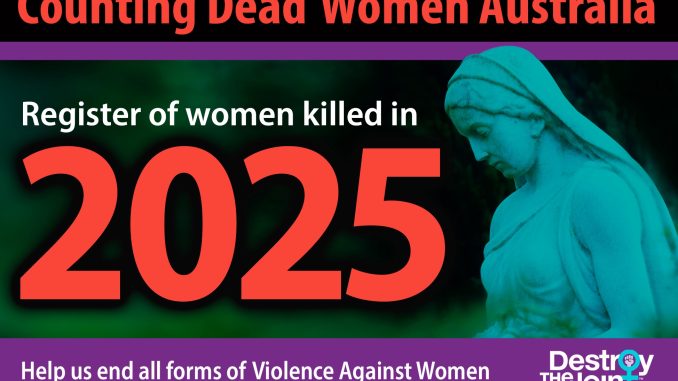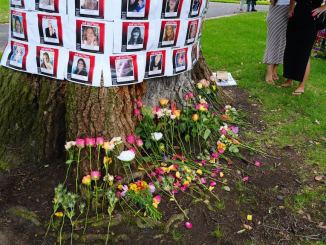
Background and purpose of the topic:
Gender-based violence is Australia’s most serious and lasting public problem. According to the organisation “Counting Dead Women.”, 2024 was a terrible year for gender-based violence in Australia, with 79 women dying from it, and 2025 has just begun, more than10 women have already died from it. This has sparked national angry and calls for policy changes. Despite countless campaigns, policy commitments and funding support, women in Australia continue to suffer increasing harm at home, work and in public.
https://www.facebook.com/profile.php?id=100063733051461

Therefore, this article proposes a special review to explore the reasons why gender-based violence continously lasting in Australia, increase the voices of women and marginalized people, find effective ways to solve or reduce gender-based violence through discussions with experts, and raise awareness of gender-based violence among all sectors of Australian society.
News Angle:
My news perspective will start with recent incidents of gender-based violence, which will attract the attention of the audience. Then, combined with the latest statistics, I will explore the current situation and causes of gender-based violence, and criticize ineffective measures to deal with gender-based violence. In addition, I will also emphasize the importance of paying attention to gender-based violence, and call on the whole society to make efforts to change this situation.
Target users and publications:
The primary target users are the general public among the Australia. Gender-based violence is not just a women’s issue, it also concerns the development of the entire society and every family. Secondary target users are the government, university students and youth groups, and women groups.
My first choice is The Guardian Australia. This website is digital and independent, and can express opinions freely. At the same time, this website follows the values of “Honesty, cleanness (integrity), courage, fairness, a sense of duty to the reader and the community.” (Katharine Viner, 2013), which is related to the values thatrequired for publishing news reports on gender-based violence. In addition, this website has concerned about topics such as gender-based violence and women’s safety for a long time. Many articles about gender-based violence have been published on this website. Therefore, publishing on this website can attract more readers and let them to take action to change this form. The Guardian Australia has a large number of Australian and international readers, including 1 million Australian users, which shows that the platform has a huge influence and can effectively promote the dissemination and publicity of articles.
https://www.theguardian.com/au
Interviewees:
- Experts, scholars, legal researchers and policy makers on gender-based violence and crime.
- Social organizations on gender-based violence, such as Counting Dead Women Australia, Our Watch, etc.
- Student representatives supporting gender equality and feminism.
- Male and female mass representatives
Information sources:
https://www.facebook.com/profile.php?id=100063733051461
during. (2024). Australia called for an end to violence against women. The numbers got worse. SBS News. https://www.sbs.com.au/news/article/australia-called-for-an-end-to-violence-against-women-the-numbers-got-worse/a9r4co2gj
Stranger, G. (2025, January 22). More funding needed for DV legal aid. ABC Listen. https://www.abc.net.au/listen/programs/radionational-breakfast/more-funding-needed-for-domestic-violence-legal-aid/104848238
Australian Government. (2024). National Plan to End Gender Based Violence. Department of Social Services. https://www.dss.gov.au/national-plan-end-gender-based-violence
Welcome to Guardian Australia | Katharine Viner. (2013, May 26). The Guardian. https://www.theguardian.com/media/insideguardian/2013/may/26/welcome-to-guardian-australia


Hi there, you did a great job on your proposal!
I think it would be helpful to establish a more specific angle. For example, when addressing gender-based violence, is the focus on domestic or public settings? Is it sexual, economic, physical, or verbal violence? While all of these are forms of violence against women, they involve different attributions of responsibility.
Intersectionality should also be considered, both for diversity and to broaden the scope of concern.
You might also want to discuss the historical context of this issue in Australia. I came across an organisation called White Ribbon—hope it helps: https://whiteribbon.org.au/
Lastly, consider embedding more links to support your points. Nice work!